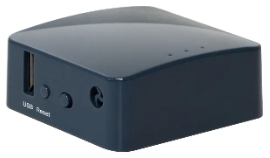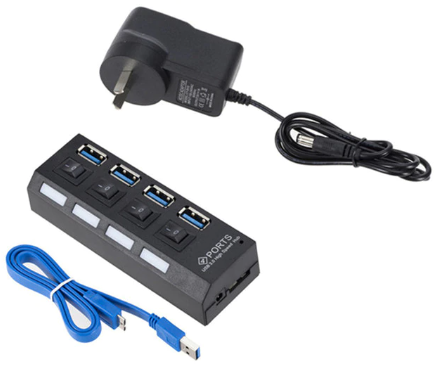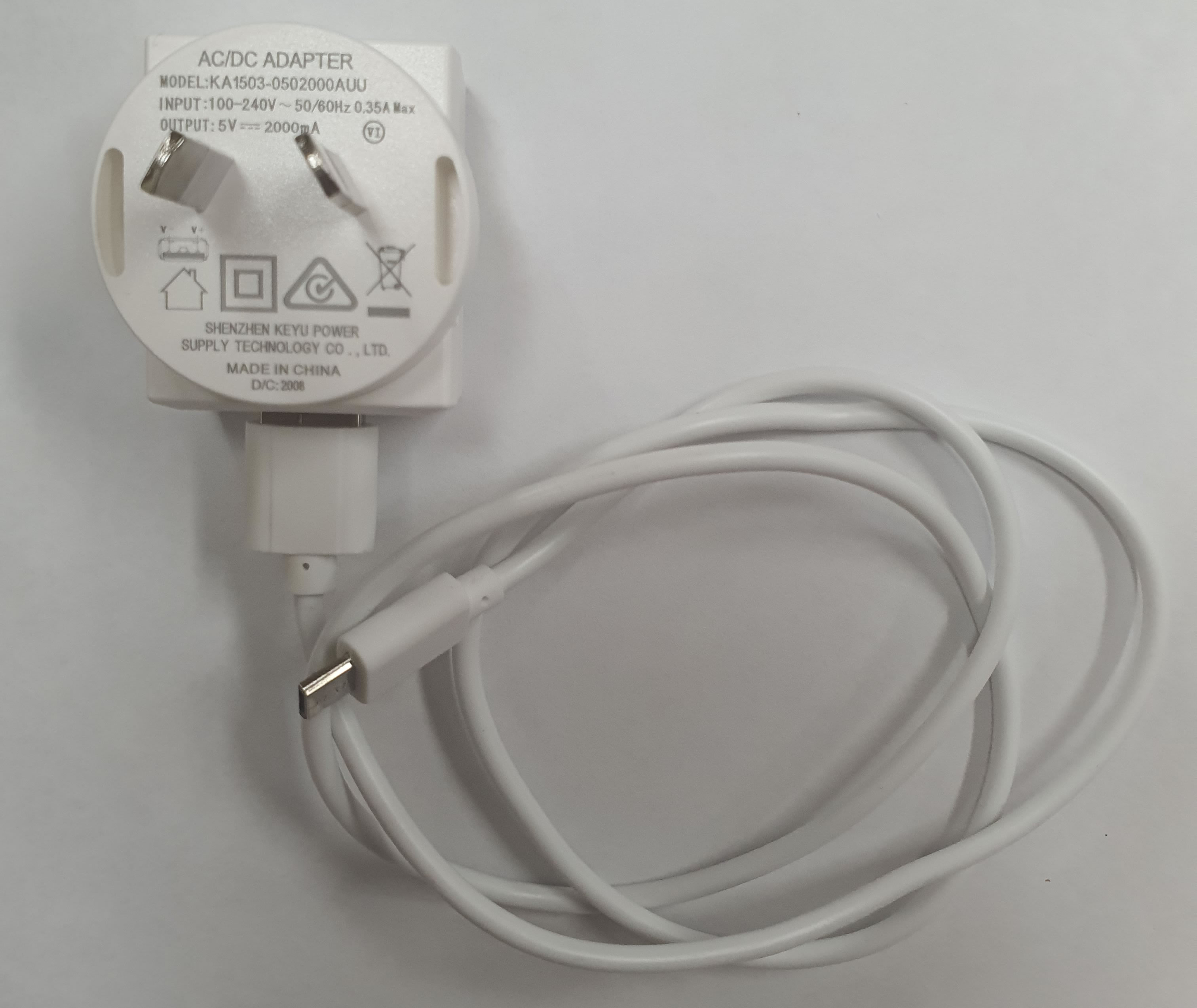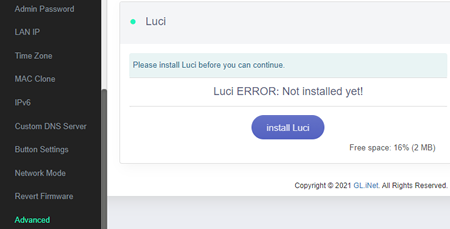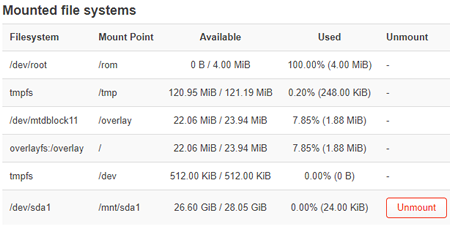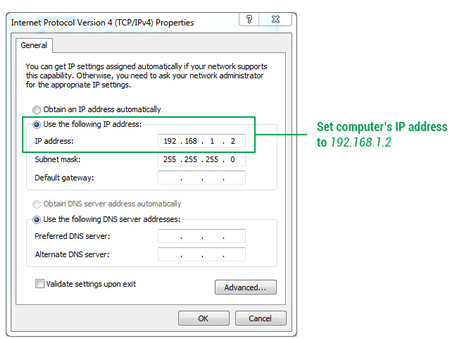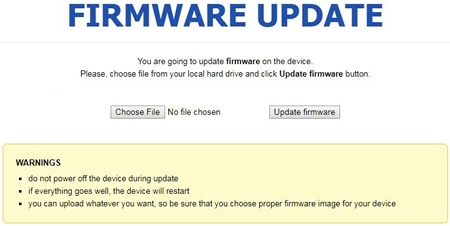GL.iNet GL-AR750
GL.iNet GL-AR750 is low cost Mesh Station with A LOT of features:
- 1 x microSD slot
- 1 x USB slot
- 3 x ethernet ports
- Dual WiFi Band
- Serial Console (internal headers)
- Small Size
Unfortunately it has now been discontinued :(
The simultaneous dual band provides an extra 5Ghz channel for secondary traffic away from primary traffic on the 2.4G channel.
- GL-AR750 / Creta - GL.iNet
- https://docs.gl-inet.com/en/2/hardware/ar750/
- [OpenWrt Wiki] GL.iNet GL-AR750
- [OpenWrt Wiki] Techdata: GL.iNet GL-AR750
- GL.iNet GL-AR750 - TechInfoDepot
Note this is AR750 not AR750S. This is the cheaper model with only 100M ethernet we are using mostly as Internal Node to be placed inside buildings.
1. Purchase
Look out for frequent special deals, we bought a few at ONLY AU$44.99 in Jan-2023.
2. Setup Guide
https://docs.gl-inet.com/en/3/setup/gl-ar750/first_time_setup/
3. Hardware Expansion
AR750's built-in USB2 ports allows the owner to add hardware peripherals easily through simple plug and play.
Thousands of USB peripherals from cameras to solid state disks to bluetooth adapters are supported.
Although MS23 comes with only one USB2 port, it can be expanded easily by non-technical owners with a powered USB hub.
Make sure it is a POWERED hub that has independent power supply. You can get either Low Power Hubs with 5V power supplies or High Power Hubs with 12V power supply.
Below image shows a MS23 driving four USB3 disks using its single USB2 port through a high power hub.
4. Radio Details
There are 2 radios: 5GHz (phy0) and 2GHz (phy1) from the iw list command.
Under Supported interface modes: below, we can see that both radios support mesh point mode (802.11s).
Wiphy phy1
wiphy index: 1
max # scan SSIDs: 4
max scan IEs length: 2257 bytes
max # sched scan SSIDs: 0
max # match sets: 0
Retry short limit: 7
Retry long limit: 4
Coverage class: 0 (up to 0m)
Device supports AP-side u-APSD.
Device supports T-DLS.
Available Antennas: TX 0x3 RX 0x3
Configured Antennas: TX 0x3 RX 0x3
Supported interface modes:
* IBSS
* managed
* AP
* AP/VLAN
* monitor
* mesh point
* P2P-client
* P2P-GO
* outside context of a BSS
Band 1:
Capabilities: 0x11ef
RX LDPC
HT20/HT40
SM Power Save disabled
RX HT20 SGI
RX HT40 SGI
TX STBC
RX STBC 1-stream
Max AMSDU length: 3839 bytes
DSSS/CCK HT40
Maximum RX AMPDU length 65535 bytes (exponent: 0x003)
Minimum RX AMPDU time spacing: 8 usec (0x06)
HT TX/RX MCS rate indexes supported: 0-15
Frequencies:
* 2412 MHz [1] (23.0 dBm)
* 2417 MHz [2] (23.0 dBm)
* 2422 MHz [3] (23.0 dBm)
* 2427 MHz [4] (23.0 dBm)
* 2432 MHz [5] (23.0 dBm)
* 2437 MHz [6] (23.0 dBm)
* 2442 MHz [7] (23.0 dBm)
* 2447 MHz [8] (23.0 dBm)
* 2452 MHz [9] (23.0 dBm)
* 2457 MHz [10] (23.0 dBm)
* 2462 MHz [11] (23.0 dBm)
* 2467 MHz [12] (disabled)
* 2472 MHz [13] (disabled)
* 2484 MHz [14] (disabled)
valid interface combinations:
* #{ managed } <= 2048, #{ AP, mesh point } <= 8, #{ P2P-client, P2P-GO } <= 1, #{ IBSS } <= 1,
total <= 2048, #channels <= 1, STA/AP BI must match, radar detect widths: { 20 MHz (no HT), 20 MHz, 40 MHz }
HT Capability overrides:
* MCS: ff ff ff ff ff ff ff ff ff ff
* maximum A-MSDU length
* supported channel width
* short GI for 40 MHz
* max A-MPDU length exponent
* min MPDU start spacing
max # scan plans: 1
max scan plan interval: -1
max scan plan iterations: 0
Supported extended features:
* [ RRM ]: RRM
* [ FILS_STA ]: STA FILS (Fast Initial Link Setup)
* [ CQM_RSSI_LIST ]: multiple CQM_RSSI_THOLD records
* [ CONTROL_PORT_OVER_NL80211 ]: control port over nl80211
* [ TXQS ]: FQ-CoDel-enabled intermediate TXQs
* [ AIRTIME_FAIRNESS ]: airtime fairness scheduling
* [ SCAN_RANDOM_SN ]: use random sequence numbers in scans
* [ SCAN_MIN_PREQ_CONTENT ]: use probe request with only rate IEs in scans
* [ CAN_REPLACE_PTK0 ]: can safely replace PTK 0 when rekeying
* [ CONTROL_PORT_NO_PREAUTH ]: disable pre-auth over nl80211 control port support
* [ DEL_IBSS_STA ]: deletion of IBSS station support
* [ MULTICAST_REGISTRATIONS ]: mgmt frame registration for multicast
* [ SCAN_FREQ_KHZ ]: scan on kHz frequency support
* [ CONTROL_PORT_OVER_NL80211_TX_STATUS ]: tx status for nl80211 control port support
Wiphy phy0
wiphy index: 0
max # scan SSIDs: 16
max scan IEs length: 199 bytes
max # sched scan SSIDs: 0
max # match sets: 0
Retry short limit: 7
Retry long limit: 4
Coverage class: 0 (up to 0m)
Device supports AP-side u-APSD.
Available Antennas: TX 0x1 RX 0x1
Configured Antennas: TX 0x1 RX 0x1
Supported interface modes:
* IBSS
* managed
* AP
* AP/VLAN
* monitor
* mesh point
* P2P-client
* P2P-GO
* P2P-device
Band 2:
Capabilities: 0x196f
RX LDPC
HT20/HT40
SM Power Save disabled
RX HT20 SGI
RX HT40 SGI
RX STBC 1-stream
Max AMSDU length: 7935 bytes
DSSS/CCK HT40
Maximum RX AMPDU length 65535 bytes (exponent: 0x003)
Minimum RX AMPDU time spacing: 8 usec (0x06)
HT TX/RX MCS rate indexes supported: 0-7
VHT Capabilities (0x33800132):
Max MPDU length: 11454
Supported Channel Width: neither 160 nor 80+80
RX LDPC
short GI (80 MHz)
RX antenna pattern consistency
TX antenna pattern consistency
VHT RX MCS set:
1 streams: MCS 0-9
2 streams: not supported
3 streams: not supported
4 streams: not supported
5 streams: not supported
6 streams: not supported
7 streams: not supported
8 streams: not supported
VHT RX highest supported: 0 Mbps
VHT TX MCS set:
1 streams: MCS 0-9
2 streams: not supported
3 streams: not supported
4 streams: not supported
5 streams: not supported
6 streams: not supported
7 streams: not supported
8 streams: not supported
VHT TX highest supported: 0 Mbps
Frequencies:
* 5180 MHz [36] (23.0 dBm)
* 5200 MHz [40] (23.0 dBm)
* 5220 MHz [44] (23.0 dBm)
* 5240 MHz [48] (23.0 dBm)
* 5260 MHz [52] (24.0 dBm) (radar detection)
* 5280 MHz [56] (24.0 dBm) (radar detection)
* 5300 MHz [60] (24.0 dBm) (radar detection)
* 5320 MHz [64] (24.0 dBm) (radar detection)
* 5500 MHz [100] (24.0 dBm) (radar detection)
* 5520 MHz [104] (24.0 dBm) (radar detection)
* 5540 MHz [108] (24.0 dBm) (radar detection)
* 5560 MHz [112] (24.0 dBm) (radar detection)
* 5580 MHz [116] (24.0 dBm) (radar detection)
* 5600 MHz [120] (24.0 dBm) (radar detection)
* 5620 MHz [124] (24.0 dBm) (radar detection)
* 5640 MHz [128] (24.0 dBm) (radar detection)
* 5660 MHz [132] (24.0 dBm) (radar detection)
* 5680 MHz [136] (24.0 dBm) (radar detection)
* 5700 MHz [140] (24.0 dBm) (radar detection)
* 5720 MHz [144] (24.0 dBm) (radar detection)
* 5745 MHz [149] (30.0 dBm)
* 5765 MHz [153] (30.0 dBm)
* 5785 MHz [157] (30.0 dBm)
* 5805 MHz [161] (30.0 dBm)
* 5825 MHz [165] (30.0 dBm)
* 5845 MHz [169] (27.0 dBm) (no IR)
* 5865 MHz [173] (27.0 dBm) (no IR)
valid interface combinations:
* #{ managed, P2P-client } <= 16, #{ P2P-GO } <= 3, #{ AP } <= 16, #{ IBSS } <= 1,
total <= 16, #channels <= 1, STA/AP BI must match, radar detect widths: { 20 MHz (no HT), 20 MHz, 40 MHz, 80 MHz, 80+80 MHz, 160 MHz }
HT Capability overrides:
* MCS: ff ff ff ff ff ff ff ff ff ff
* maximum A-MSDU length
* supported channel width
* short GI for 40 MHz
* max A-MPDU length exponent
* min MPDU start spacing
max # scan plans: 1
max scan plan interval: -1
max scan plan iterations: 0
Maximum associated stations in AP mode: 0
Supported extended features:
* [ VHT_IBSS ]: VHT-IBSS
* [ RRM ]: RRM
* [ SET_SCAN_DWELL ]: scan dwell setting
* [ FILS_STA ]: STA FILS (Fast Initial Link Setup)
* [ CQM_RSSI_LIST ]: multiple CQM_RSSI_THOLD records
* [ CONTROL_PORT_OVER_NL80211 ]: control port over nl80211
* [ TXQS ]: FQ-CoDel-enabled intermediate TXQs
* [ AIRTIME_FAIRNESS ]: airtime fairness scheduling
* [ AQL ]: Airtime Queue Limits (AQL)
* [ CONTROL_PORT_NO_PREAUTH ]: disable pre-auth over nl80211 control port support
* [ DEL_IBSS_STA ]: deletion of IBSS station support
* [ SCAN_FREQ_KHZ ]: scan on kHz frequency support
* [ CONTROL_PORT_OVER_NL80211_TX_STATUS ]: tx status for nl80211 control port support
From "valid interface combinations" entry above, this hardware can have up to 2048 simultaneous interfaces (total <= 16 ) on the 2.4G band. Those interfaces can have up to 2048 of wifi client (managed ), up to 8 of wifi access point (AP ), up to 8 of wifi mesh point (mesh point ), up to 1 of wifi peer (IBSS ).


